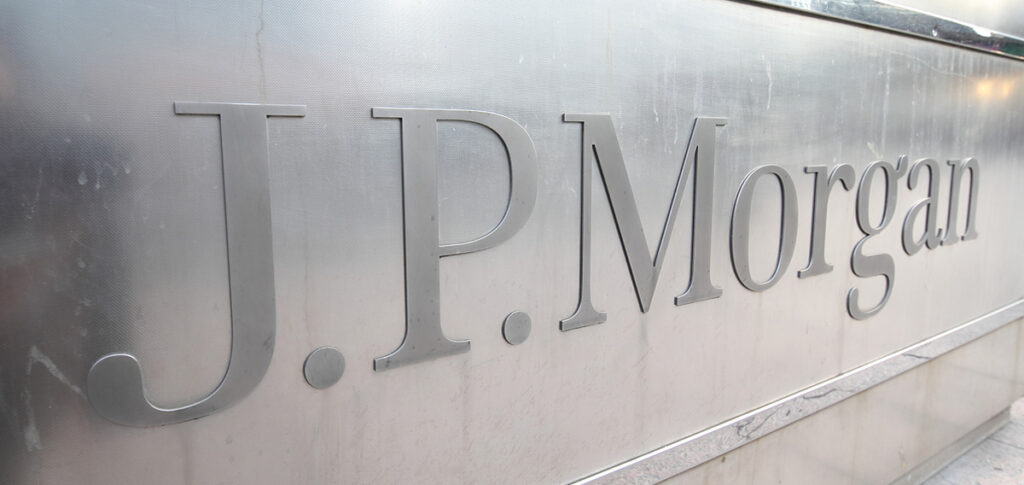 In a note to investors, JP Morgan touted gold as one of the best “debt debasement” trades in today’s volatile market. The banking giant highlighted growing skepticism of fiat currencies, the fast-approaching presidential election, heightening geopolitical pressures, and the national debt as contributors to gold’s surging demand. As investors continue scooping up more of the yellow metal, analysts suggest that prices will move higher in tandem.
In a note to investors, JP Morgan touted gold as one of the best “debt debasement” trades in today’s volatile market. The banking giant highlighted growing skepticism of fiat currencies, the fast-approaching presidential election, heightening geopolitical pressures, and the national debt as contributors to gold’s surging demand. As investors continue scooping up more of the yellow metal, analysts suggest that prices will move higher in tandem.
What is “debt debasement”?
“Debt debasement” typically refers to fiscal policies aimed at reducing the real value of national debt. This can be done through several mechanisms such as leveraging inflation, devaluing currency, and lowering interest rates. The whole idea is to diminish a currency’s buying power in a controlled manner to make future debt payments easier.
Therefore, a “debt debasement trade” is an asset that tends to perform better than traditional assets such as stocks or bonds when these currency-eroding policies are in place. As the US economy enters a period of acute quantitative easing – following the Federal Reserve’s drastic rate cuts – there’s been a concerted shift from standard investments into safe-haven assets.
Weaker Dollar Sparks Exodus
The US dollar index, which measures the dollar’s performance against a collection of valuable currencies, dipped by 4.8% in the third quarter. A devaluing dollar is both a cause and a symptom of the marketwide transition from fiat currencies into physical gold. However, JP Morgan suggests that the impact of a weaker dollar on gold prices has already been fully accounted for. Analysts note that gold has “gone well beyond the moves implied by dollar and real bond yield shifts,” indicating that additional factors drive the yellow metal’s sustained rise and are likely to support its continued momentum.
The Factors Driving Gold’s Rally Now
In the report, JP Morgan analysts point to a range of factors in the driver’s seat of gold’s sustained rally. Namely, the group underscores:
- Geopolitical Uncertainty – The wars in the Middle East and Eastern Europe are dominating headlines, but there are 110 armed conflicts across the globe. These geopolitical tensions erode investor confidence, pushing people to park their wealth in safe-haven assets.
- Long-Term Inflation – The US economy has reigned in inflation compared to previously high levels. However, it remains above the Fed’s target of 2%, and the impact of years-long inflation will continue to hurt the dollar and drive more people to gold.
- High Government Deficits – The world economy is standing on a ballooning collective debt of $312 trillion. The US accounts for more than 10% of that deficit with a $35 trillion national debt and absolutely no plans to solve it.
- Weak Fiat Currencies – The rapid accumulation of debt inherent within the fiat currency system is leading to increased skepticism of these untethered markets. Central banks, especially in emerging economies, are choosing to ground their economies in gold for a stronger foundation.
- De-Dollarization – A combination blow of dollar weaponization and rapid debt growth has encouraged countries to distance themselves from the dollar’s influence. In place of a strong dollar, countries are turning to gold.
Bitcoin as “Debasement Trade”?
In the same report, JP Morgan said it expects Bitcoin to receive a similar boost from the “debt debasement” policies. However, this forecast is tempered by CEO Jamie Dimon’s outspoken criticism of the cryptocurrency. In the past, the bank leader has called Bitcoin a “Ponzi scheme”, “worthless”, and a “pet rock.” Although digital currencies might experience a temporary price boost from the dollar exodus, there’s a clear preference for physical gold.
Investors Gobble Up Gold
Beyond the economic and geopolitical factors encouraging the shift to gold, JP Morgan highlights that investors eagerly seek physical gold. Central banks have entered their third year of record-setting gold purchases, hitting a new peak in the first half of 2024. “There is little doubt that the pace of central bank purchases is key to gauging the future trajectory for gold prices.” Analysts also point to growing demand from retail investors across the globe as everyday people follow the plays of national-level players.


